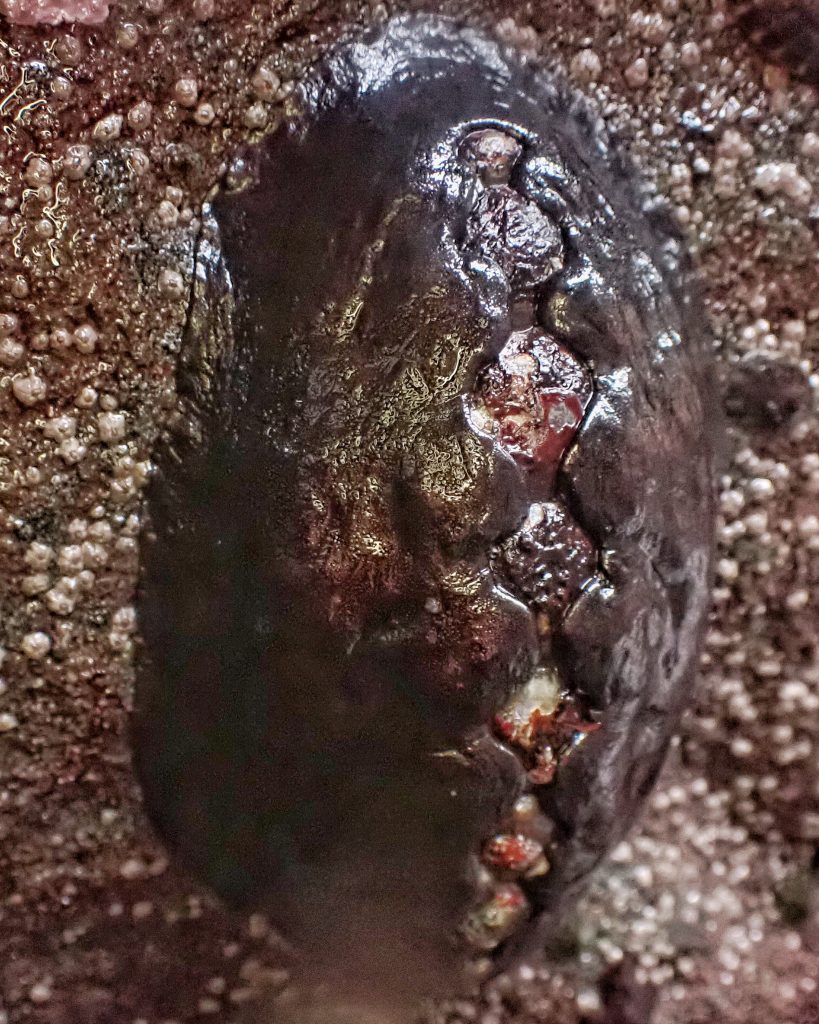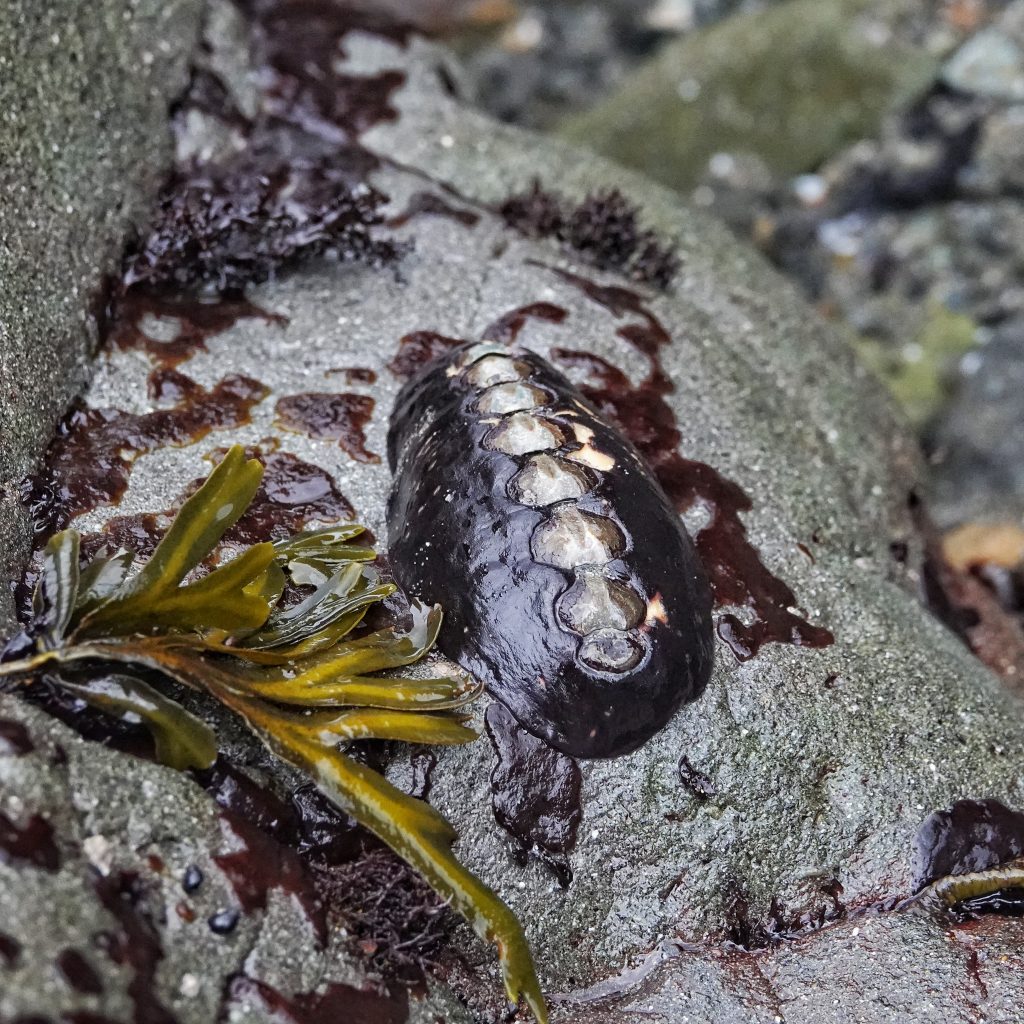
I found 3 of these chitons (variously called black Katy chiton, black leather chiton, black chiton, leather chiton, sea prunes, or small Chinese slipper, they are marine mollusks in the family Mopaliidae) at Lone Ranch beach outside of Brookings, Oregon. They were the only chitons I found there (or anyplace else on this trip for that matter), but I didn’t stick around until the tide was fully out (since that would’ve been nearly an hour after sunset) and chilly weather and rough seas made me less adventurous than I prefer to be while exploring tidepools. There was a fair amount of diversity there, and I would expect that a fuller perusal would yield other species.
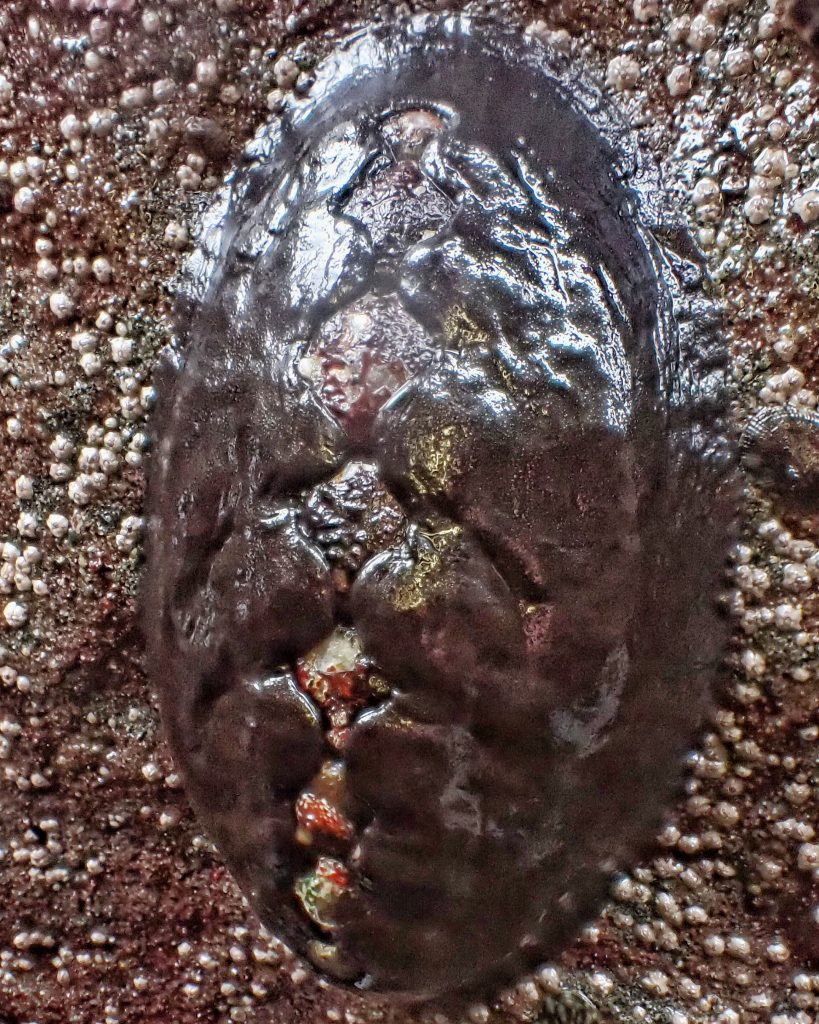
Chitons are very cool creatures. Their body is covered by 8 plates (called valves) that overlap, so the body of the animal is always protected, but allow flexibility so that the chiton can move. They can even ‘roll up’ like pill bugs do if dislodged from their rock surface. Katharina tunicata is unique in our area in that most of the plates are covered by a dark brown to black leathery girdle. They move slowly over the surface of the rocks, grazing on various algae and tiny diatoms. They are less photosensitive than most chitons, and can often be found exposed by ebbing tides. And they can also repair their valves if they are damaged, often within a few weeks.
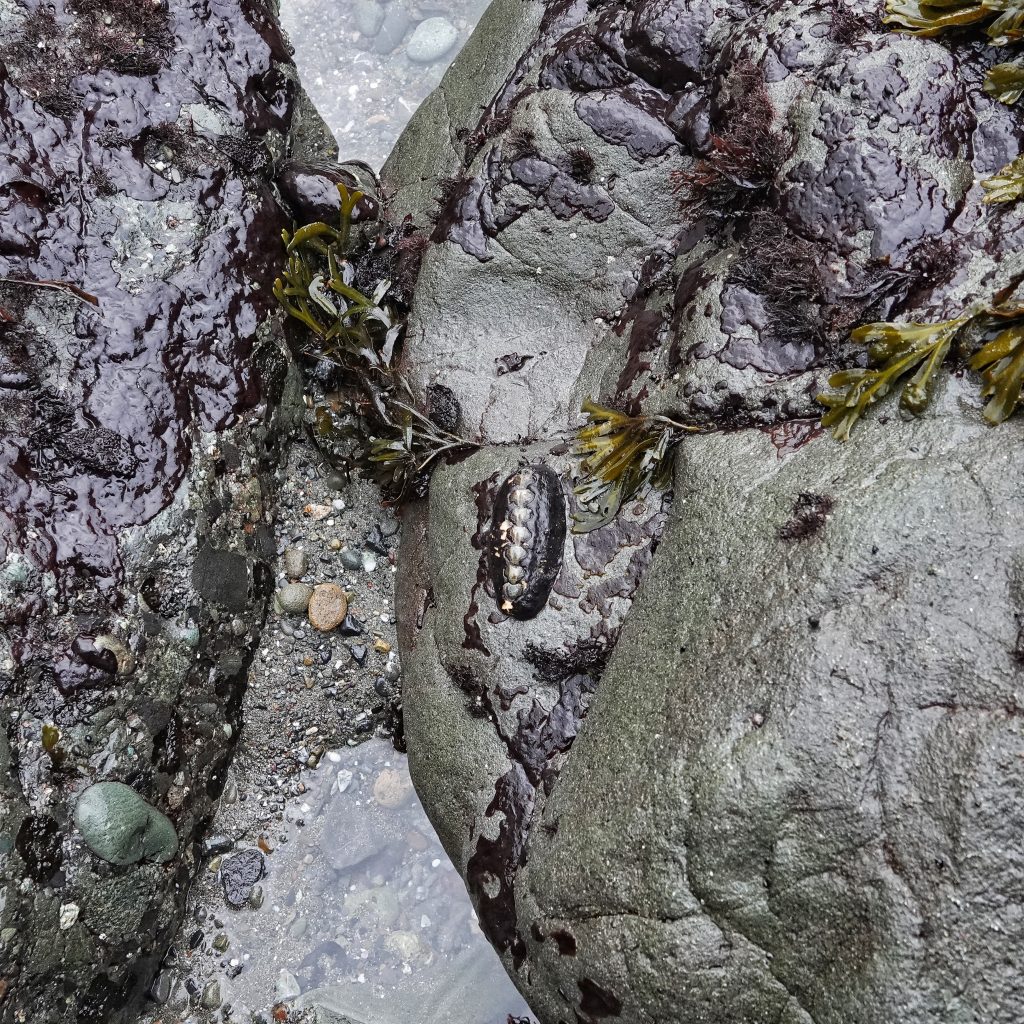
Black Katy chitons influence the ecology of their ecosystems, especially when found in large numbers, because their feeding upon large algae allows more sunlight to reach the surface of the substrate. This increases the growth rate of the diatoms upon which limpets and other chitons feed, thus shifting both the flora and faunal composition of the community. In many places along our coast Katharina tunicata is the most abundant chiton in the mid intertidal zone.

This species was an important food source for the indigenous peoples of the coastline. It was an important source of Vitamin A and calcium, as well as animal protein. Based on their prevalence in some shell middens, Dale Croes (2015) believes they may have been vital to some communities at certain times of the year. Its centrality may be reflected by the fact that in some Haida origin stories it is said that these chitons brought forth the first humans. Katharina tunicata are still harvested for food in some areas, and on the Kenai Peninsula in Alaska, where indigenous peoples have been harvesting them for at least 3,000 years, the economic effects of the Exxon Valdez oil spill in 1989 led to a significant increase in harvesting efficiency and pressure on these chitons.
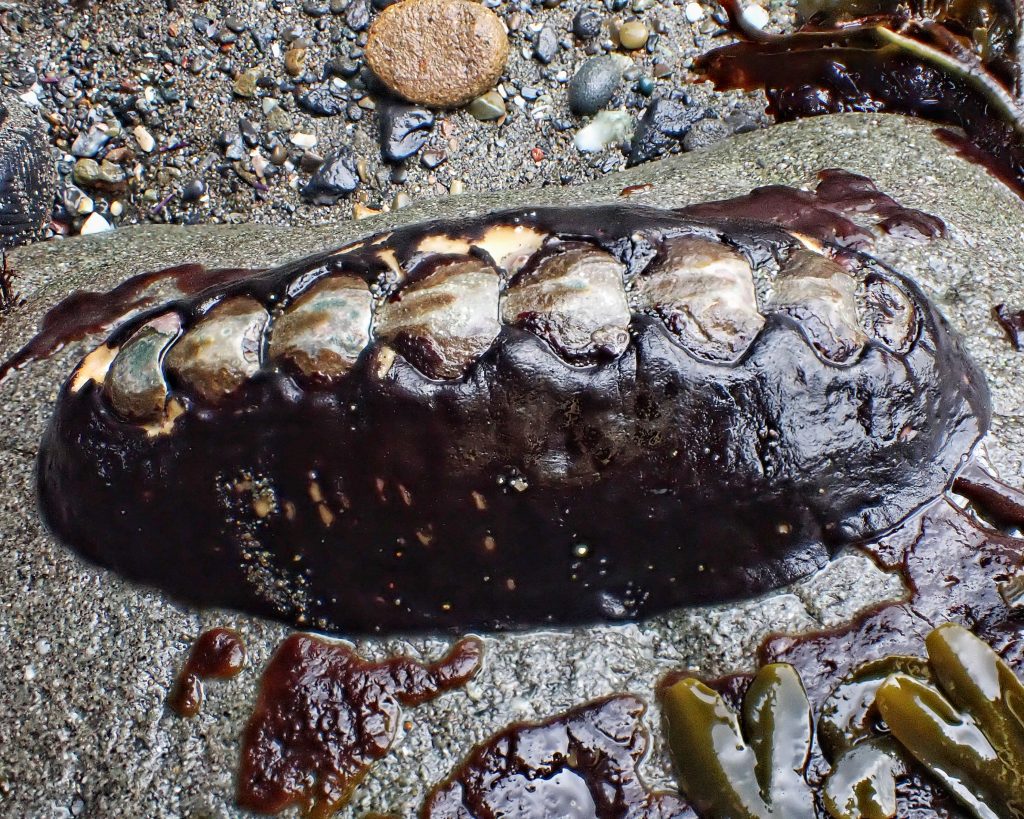
Description-Large (up to 5” in length) oval chiton with a thick, leathery, black girdle that covers all but the most dorsal parts of the valves; exposed valves are vaguely diamond-shaped, and start out white, but may be weathered to dark grey to light tan, mottled, or partially covered by sand and detritus.
Similar species-No other chitons have the heavy, black girdle covering most of the valves.
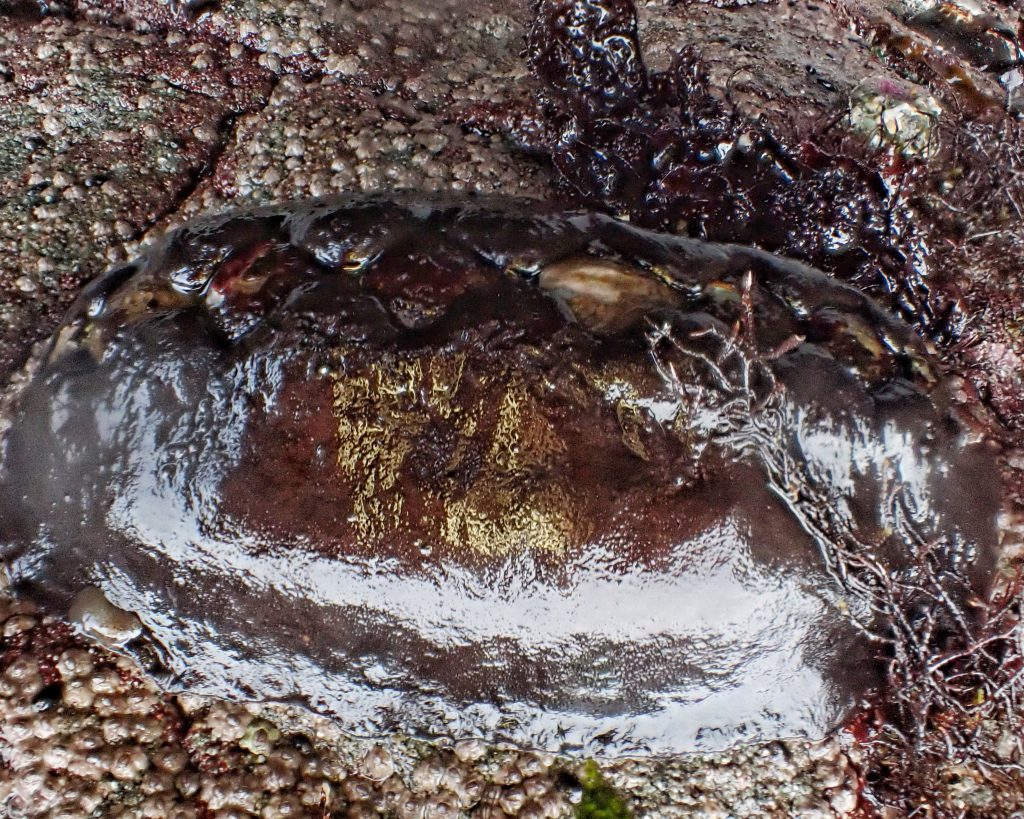
Habitat-Rocky, mid to low intertidal zones.
Range-West Coast North America from Alaska to Southern California, as well as the ne coast of Asia; found all along the rocky intertidal areas of the PNW.
Eats-Brown and red algae, and benthic diatoms.
Eaten by-Sea stars (like Pisaster ochraceus), leather stars, urchins, oystercatchers and other birds, sea otters and humans
Adults active-Year around
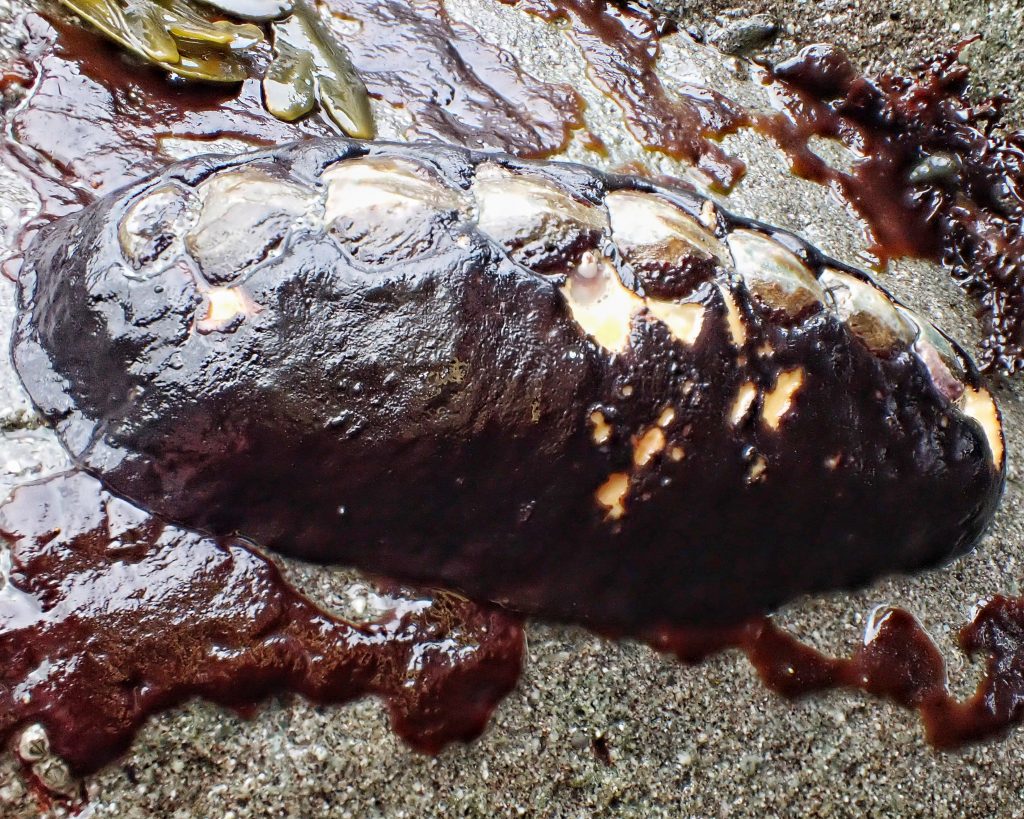
Life cycle-Spawning is initiated by rising temperatures, which may be linked to the phytoplankton blooms that feed the larvae; males broadcast sperm into the water, which stimulates the release of eggs by the females, and usually all of the members of a community spawn at once; fertilized eggs hatch into free swimming trochophore larvae in less than a week; in their first few free hours they prefer to settle on Lithothamnium spp. coralline algae, and within 3 hours metamorphose into juveniles; sexual maturity is reached in about 2 years, and adults may live an additional 3 years.
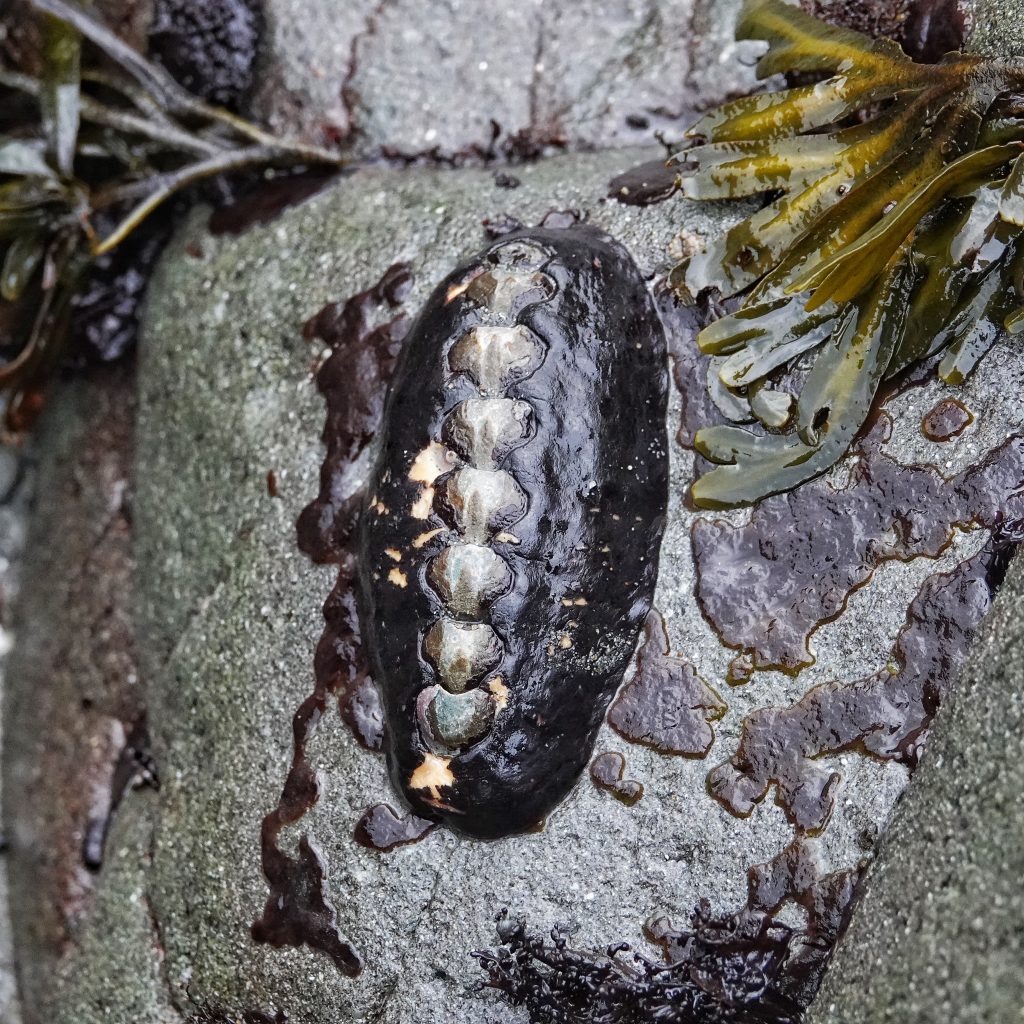
Etymology of names–Katharina may be from the Greek word for clean/spotless, and allude to the unblemished girdle, or it may be from a woman’s name (the fact that the K in Katy is capitalized in the common name lends credence to this idea), possibly Lady Katherine Douglas, a well known collector during John Gray’s (the erector of this genus) time, though I’m not sure why the spelling would’ve been changed, but I can’t verify either notion because Gray did not deign to explain his reasoning. The specific epithet tunicata is from the Latin word for ‘wearing a garment’, and probably also refers to the leathery girdle that covers most of their plates.
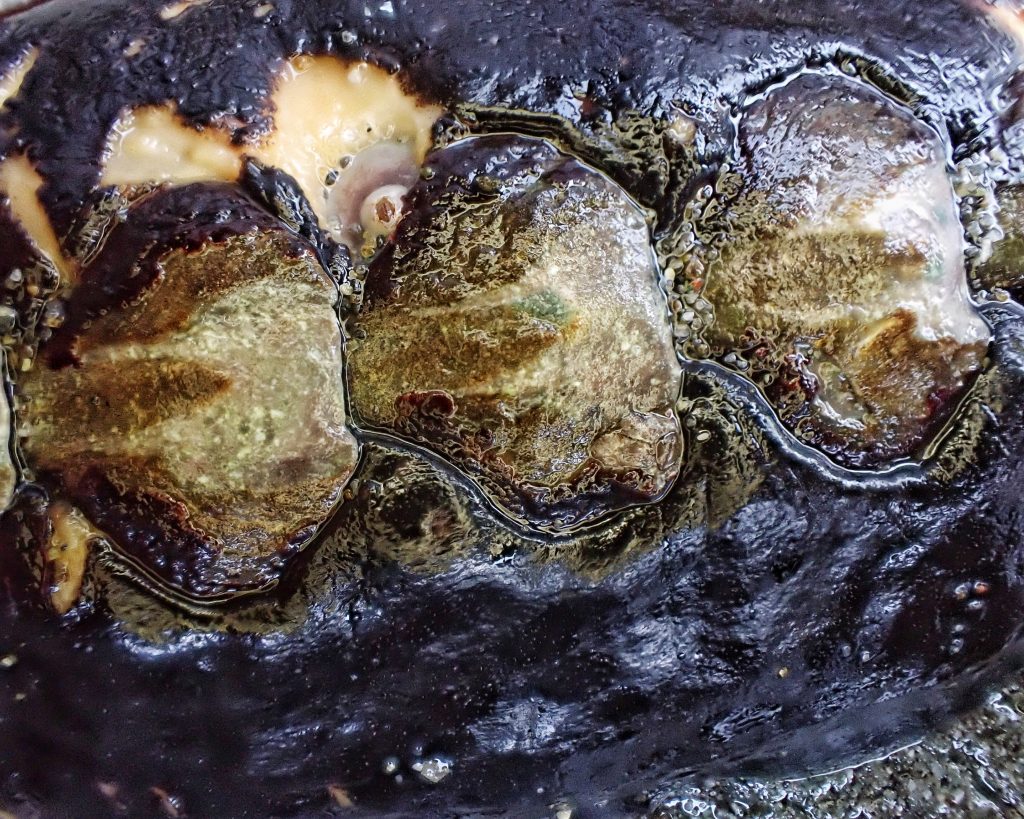
https://marine.ucsc.edu/target/target-species-katharina.html
https://www.centralcoastbiodiversity.org/black-katy-chiton-bull-katharina-tunicata.html
https://books.google.com/books/about/Journal_of_Northwest_Anthropology.html?id=KspWDwAAQBAJ
https://animaldiversity.org/accounts/Katharina_tunicata/
https://en.m.wikipedia.org/wiki/Trochophore
